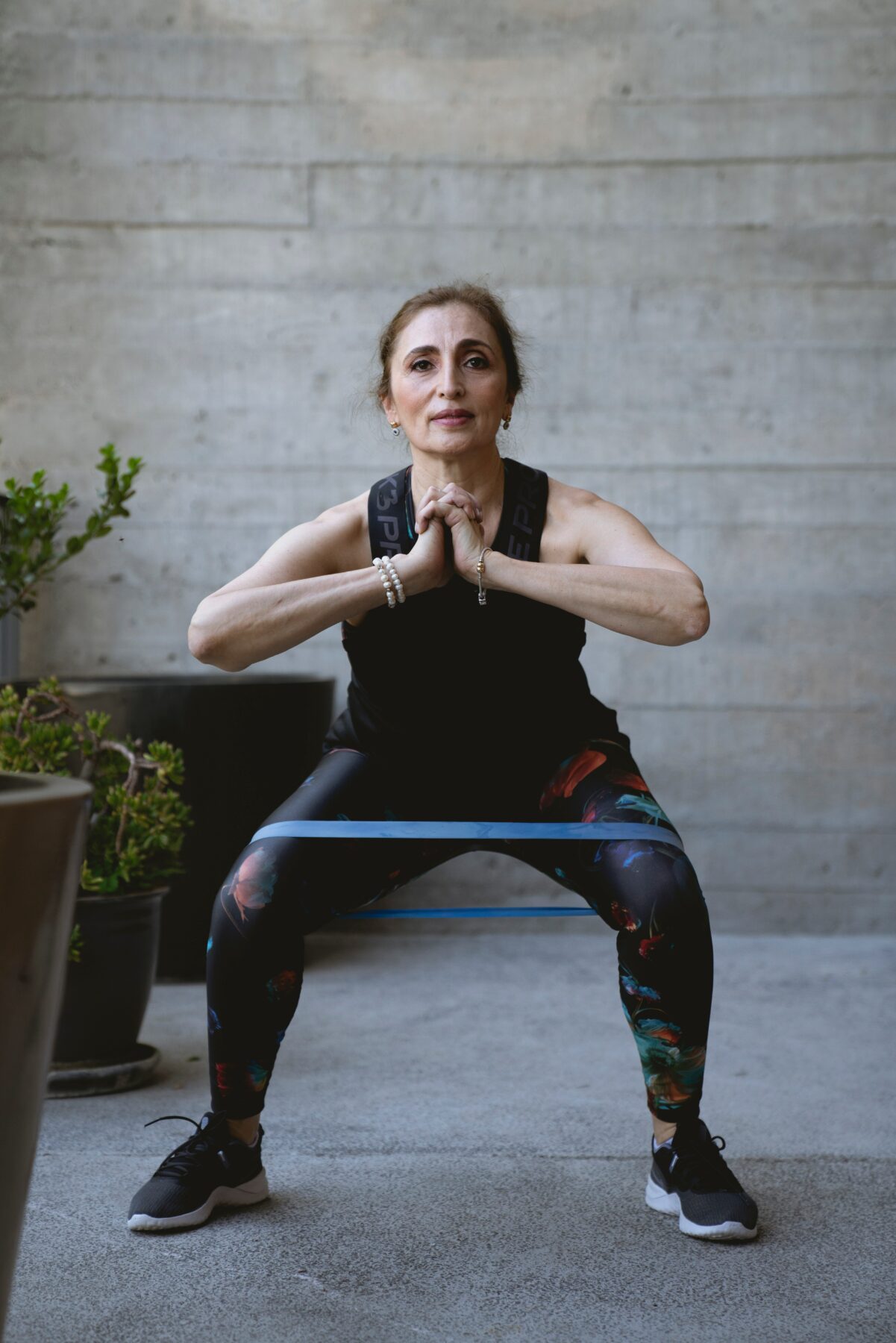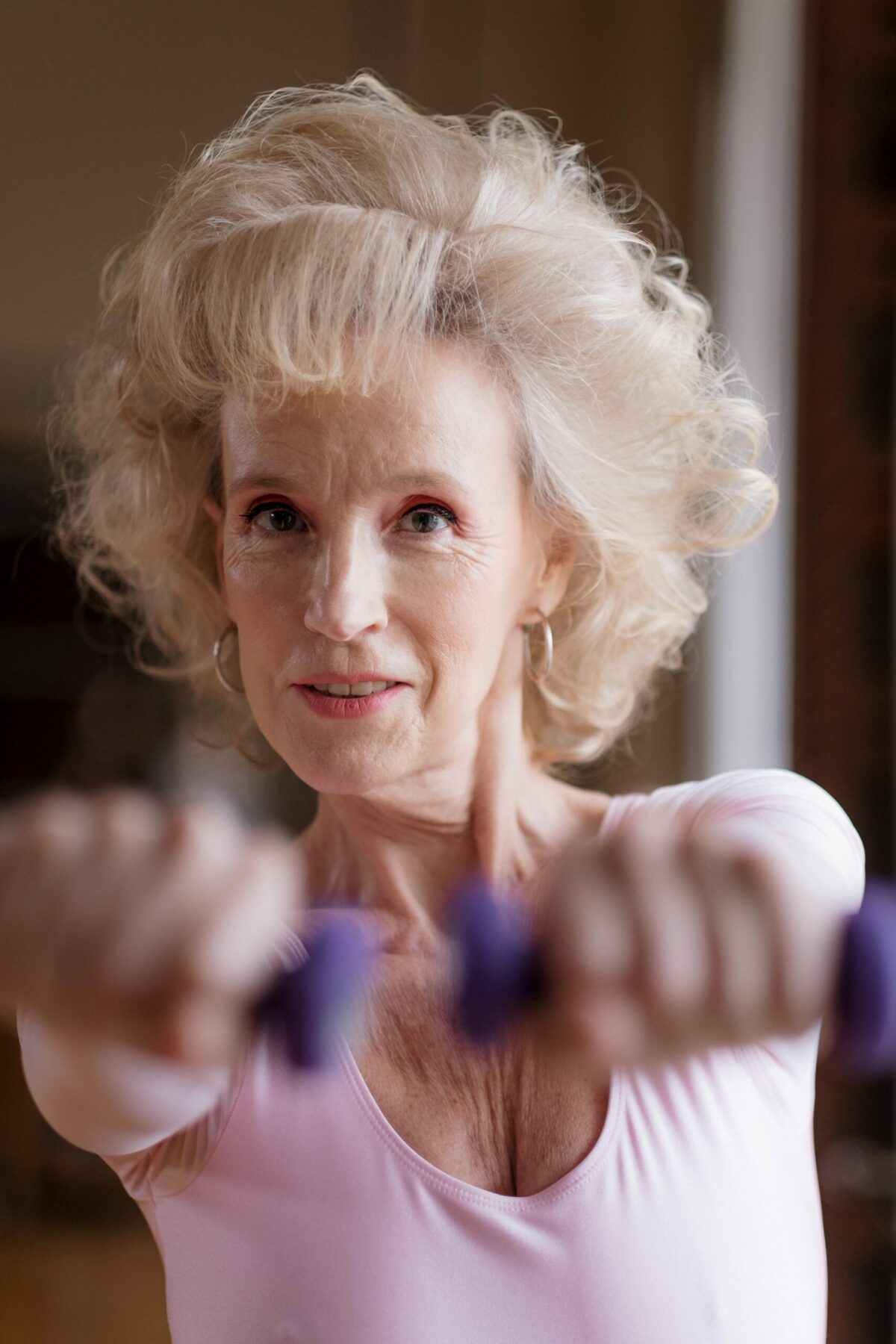The Benefits of Resistance Training During Menopause

Menopause can be a confusing and challenging time, and although it is a phase in every woman’s life, many still report being surprised by the symptoms and not feeling equipped to deal with what’s going on. The menopausal transition can wreak havoc on a woman’s physical and psychological well-being.
I’ve been a fitness pro for 20 years and have been exclusively working with menopausal clients for over a decade. One of the most common comments I hear is, “I don’t understand what’s happening with my body. I’m doing what I’ve always been doing, but the pounds and belly fat seem to increase.” Women feel like strangers in their own bodies; I can completely relate.
Going through perimenopause myself, I had to relearn what works and, most importantly, how to be kind to myself. The body’s changes during menopause aren’t a sign of laziness or lack of willpower; they are due to a significant hormonal shift happening in your body. Your body is trying to adapt to those changes, so we have to learn to work with our new hormonal profile rather than fight it. The go-to first step for women as they feel their body change is oftentimes to work out more and eat less or try a new diet, which can actually backfire.
Having some basic information about menopause and how excellent resistance training is will make a world of difference. So let’s dive in!
Menopause Basics
The menopausal transition is a normal phase in every woman’s life, not a deficiency disease or something needing to be cured. It naturally occurs between the ages of 40 and 60, and although the average age of menopause is 51, the exact age at which menopause starts is impossible to be determined.
That inability to predict when it starts or ends often leaves women surprised and confused about symptoms they may be experiencing. Menopause is often used as an umbrella term for perimenopause, menopause and postmenopause. But, menopause, itself, refers to a specific point in a woman’s life when she has gone 12 months without a period.
The most known symptoms of menopause are hot flashes and night sweats, but the symptom list is much longer than this. In addition, it can include psychological symptoms like depression, physical symptoms like musculoskeletal pain, weight gain and body image issues, and sexual symptoms such as vaginal dryness and low libido. The menopausal transition is also associated with many health risk factors, such as the increased risk for cardiovascular disease, osteoporosis, decreased bone mineral density and metabolic syndrome. One powerful tool to minimize some of the symptoms is resistance training.

Why is resistance training so important?
Resistance training has proven to be a powerful ally for women transitioning through menopause. Its benefits range from reducing hot flashes and osteoporosis to lowering depression and anxiety. One of the most important things to note about resistance training is that it can have different effects depending on the intensity and type of resistance training. For example, research indicates that low-to-moderate-intensity resistance training is beneficial for reducing anxiety. In contrast, high-intensity, high-impact and heavy-load resistance training is more useful for bone health, strength, muscle retention and growth, and body image. Heavy resistance training and high-impact training have been shown to reverse 1% of bone loss per year in pre- and postmenopausal women.
When I first start working with clients and mention heavy resistance training, the first comment usually is, “But I don’t want to get big or bulky.” Unfortunately, this myth, as untrue as it is, persists. So I want to set the record straight: that’s not going to happen. What it will do is make you stronger.
Here are two insanely good reasons you should try heavy lifting, or using a weight that lets you only complete five or six repetitions: (1) it increases growth hormone (GH), and (2) it helps increase resting metabolic rate (RMR). GH is a critical player in developing lean muscle mass and burning fat. Because it naturally decreases with age, increasing GH during the menopausal transition can be especially beneficial because the natural aging process combined with menopause accelerates muscle and bone loss. RMR also declines as a part of the normal aging process, so by taking steps to increase your RMR, you make your body burn more calories in a resting state. This is a good thing!
Although resistance training has fantastic benefits, it’s important to highlight some potential adverse outcomes, especially during menopause.
Long workouts (more than 45 minutes) and high-intensity can:
- Decrease sleep quality and length
- Increase circulating cortisol levels, which can lead to increased abdominal fat (that’s why it’s beneficial to keep workouts short — less than 40 minutes)
- Trigger hot flashes (I love high-intensity workouts and still do them, but they trigger hot flashes quite drastically for me, so I consider that when planning my workouts)
My number one advice to women trying to figure out what works during menopause is to focus on enjoyable activities! Forcing yourself through a workout regimen is not sustainable and will eventually lead to failure (not the good kind).
Doing something you feel obligated to do won’t work. Be honest with yourself. Have you ever said, “I think I should run more,” when you don’t like to run? If you love to run, great, but if you don’t, find something you enjoy. If you don’t like it, you won’t stick to it. Make working out fun, and the rest will come. It’s as simple as that.
About the Author

Maria Luque, PhD, is a fitness expert, health science professor and menopause researcher with over 20 years of experience. She’s the creator of Fitness in Menopause, a company dedicated to helping women navigate the challenges and rewards of menopause. She holds graduate and post-graduate degrees in health sciences and teaches at the College of Health and Human Services at TUI. Certifications include ACE-CPT, ACE-FNS and CHES.






